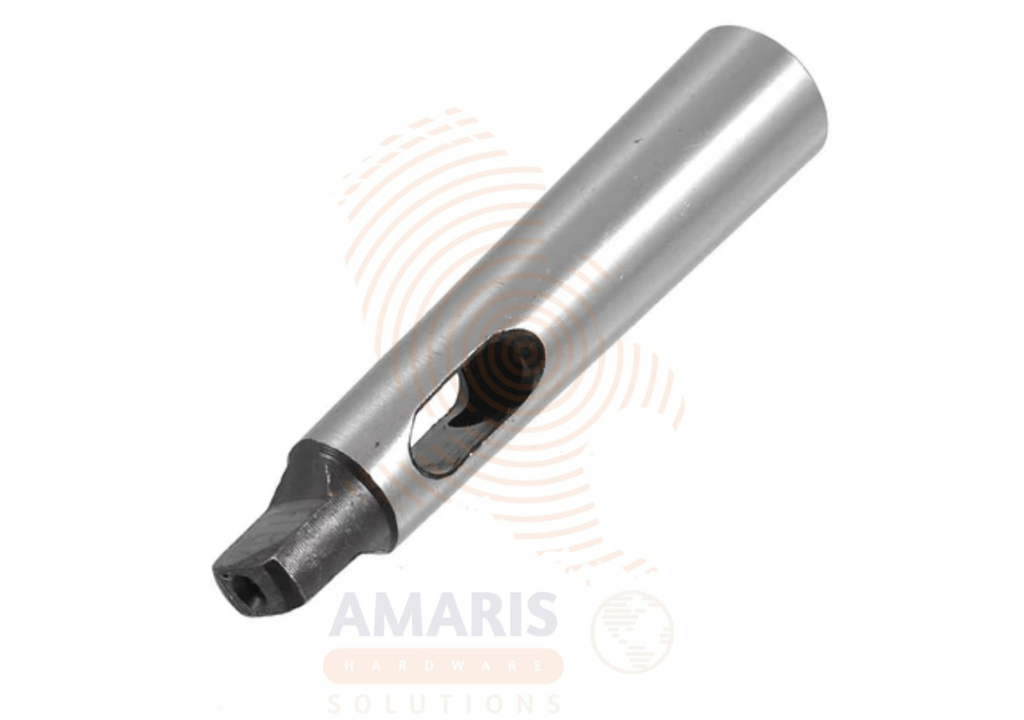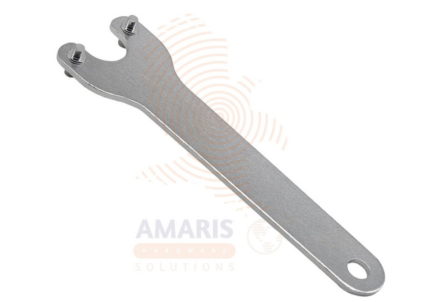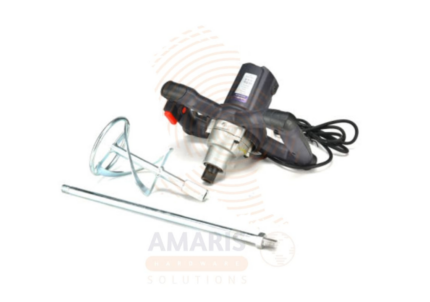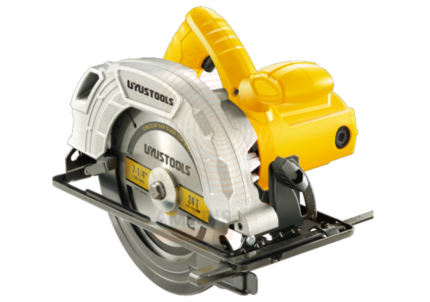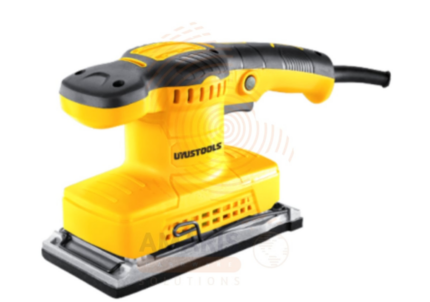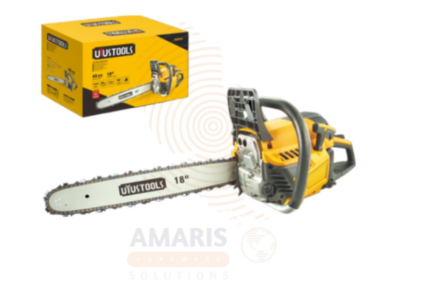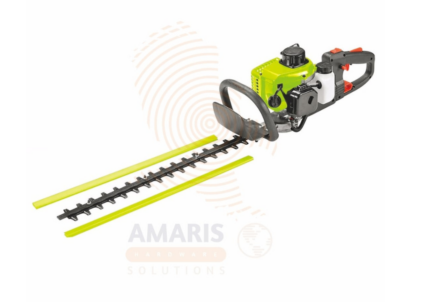Back to products
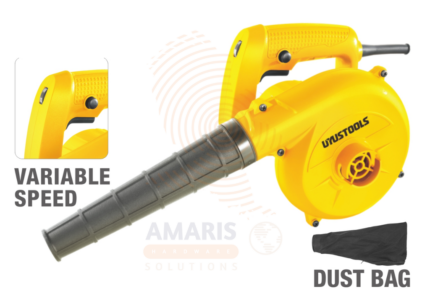

Aspirator Blower - Variable speed
$28.42 Original price was: $28.42.$27.00Current price is: $27.00.
Arbor
$17.31 Original price was: $17.31.$16.44Current price is: $16.44.
WhatsApp Order
In the context of hardware, an arbor is a cylindrical metal shaft or spindle that is typically used in conjunction with various tools and equipment. It often serves as a central axis onto which other components, such as blades, grinding wheels, or drill bits, can be attached. Arbors are commonly found in tools like saws, grinders, and drills, facilitating the secure mounting and rotation of cutting or abrasive elements. They play a crucial role in providing stability and precision during the operation of such tools, ensuring efficient and controlled performance.
Description
Table of Contents
ToggleArbor
Uses
-
Saw Arbors:
-
Circular Saws: Arbors in circular saws hold the blade securely, enabling precise and controlled cutting of materials.
-
Table Saws: Arbors in table saws support the attachment of different types of blades for various cutting tasks.
-
-
Grinding Arbors:
-
Bench Grinders: Arbors in bench grinders secure grinding wheels, allowing for sharpening and shaping of tools, blades, and metal objects.
-
-
Drill Arbors:
-
Drill Presses: Arbors in drill presses provide the central spindle onto which different drill bits can be attached, ensuring accurate and consistent drilling.
-
-
Tool Arbors:
-
Milling Machines: Arbors in milling machines hold various cutting tools, allowing for precision milling and shaping of materials.
-
Lathe Machines: Arbors in lathes support the mounting of cutting tools and accessories for turning, facing, and shaping materials.
-
-
Attachment Arbors:
-
Power Sanders: Arbors in sanders secure abrasive discs or belts for efficient material removal and surface finishing.
-
Buffing Machines: Arbors in buffing machines hold buffing wheels for polishing and finishing surfaces.
-
-
Adapters and Extensions:
-
Arbors are often used as adapters or extensions to change the size or type of tool that can be mounted on a particular piece of equipment.
-
-
Versatile Mounting:
-
Arbors provide a standardized and secure means of mounting various cutting and grinding tools, making it easier to switch between different applications.
-
-
Woodworking Tools:
-
In woodworking, arbors are used in tools like routers and spindle shapers to secure cutting bits for shaping and profiling wood.
-
-
Custom Applications:
-
Depending on the specific tool and its intended use, arbors can be adapted or designed for custom applications, providing flexibility in hardware usage.
-
SAFETY HANDLING PRECAUTIONS
Safety Precautions
-
Wear Personal Protective Equipment (PPE):
-
Always wear appropriate PPE, including safety glasses or goggles, hearing protection, and in some cases, gloves. The specific PPE requirements may vary based on the tool and the application.
-
-
Read and Follow Tool Manuals:
-
Familiarize yourself with the user manual for the specific tool and arbor you are using. Follow the manufacturer's instructions and guidelines for installation, operation, and maintenance.
-
-
Inspect Equipment Before Use:
-
Regularly inspect the arbor, tool, and associated equipment for any signs of wear, damage, or defects. Replace any worn-out or damaged components before use.
-
-
Securely Mount Tools:
-
Ensure that the cutting or grinding tool is securely mounted on the arbor. Follow proper procedures for attaching and tightening tools to prevent them from becoming loose during operation.
-
-
Use Appropriate Arbor Size:
-
Match the arbor size to the tool's specifications. Using the correct size ensures a proper fit and minimizes the risk of accidents caused by mismatched components.
-
-
Check Speed Ratings:
-
Be aware of the recommended speed ratings for both the arbor and the tool. Exceeding these speed limits can lead to equipment failure and pose a safety hazard.
-
-
Secure Workpieces:
-
Securely clamp or otherwise stabilize the workpiece to prevent movement during operation. This helps maintain control over the tool and reduces the risk of kickbacks.
-
-
Follow Safe Operating Procedures:
-
Adhere to safe operating procedures outlined in the tool's manual. This includes proper feeding techniques, cutting speeds, and other guidelines for the specific application.
-
-
Maintain a Clean Workspace:
-
Keep the work area clean and organized. Remove debris, dust, and other obstructions to maintain visibility and prevent potential tripping hazards.
-
-
Use Dust Collection Systems:
-
If applicable, use dust collection systems to minimize the inhalation of dust and debris generated during cutting or grinding operations.
-
-
Disconnect Power:
-
Before changing tools or performing maintenance on the arbor or associated equipment, disconnect the power source to prevent accidental starts.
-
-
Training and Supervision:
-
Ensure that individuals using the equipment are adequately trained in its operation. Supervise less experienced users until they demonstrate proficiency and understanding of safety protocols.
-
-
Emergency Preparedness:
-
Know the location of emergency shut-off switches, first aid supplies, and emergency exits. Have a clear understanding of emergency procedures in case of accidents or malfunctions.
-
-
Regular Maintenance:
-
Perform routine maintenance on the equipment, including lubrication and inspections, to keep it in good working condition.
-
Related products
Bi-Metal Hole Saw Set
A 9 PCS Bi-Metal Hole Saw Set refers to a collection of nine hole saws, each constructed with a bi-metal design. A hole saw is a cylindrical cutting tool used to create holes in various materials such as wood, metal, plastic, and more. The term "bi-metal" indicates that the hole saws are made from two different types of metals, typically high-speed steel (HSS) and a more durable alloy like cobalt. This combination enhances the hole saw's cutting performance, making it suitable for a wide range of applications and providing increased durability and longevity. The set typically includes hole saws of different sizes to accommodate various hole diameters, making it a versatile tool for professionals and DIY enthusiasts alike.
Cement And Paint Mixer
A cement and paint mixer is a mechanical device designed to efficiently and homogeneously blend cement or paint constituents to achieve a uniform and consistent mixture. Typically utilized in construction and painting applications, these mixers come in various designs, including portable or stationary models. They feature rotating blades, paddles, or agitators that facilitate the thorough mixing of dry or liquid materials, ensuring the creation of a well-mixed and homogeneous product suitable for construction or painting purposes.
Cement Blender
A cement blender is a mechanical device designed for the purpose of mixing and blending various components of cementitious materials, such as cement, sand, and water, to create a homogenous mixture. This blended mixture is commonly used in construction and building projects, particularly for applications like concrete production. The blender typically features a rotating drum or container that facilitates the thorough mixing of the ingredients, ensuring a consistent and uniform composition for the construction materials.
Circular Saw
A circular saw is a power tool equipped with a rotating circular blade, typically with teeth along its edge, designed for cutting various materials such as wood, plastic, metal, or masonry. It is commonly used in carpentry, construction, and other applications to make straight or beveled cuts with precision and efficiency. The circular saw is versatile and can be handheld or mounted on a table or other stationary surface, depending on the specific model and intended use.
Cordless Blower
A cordless blower is a handheld or backpack device designed for the purpose of moving air to clean or clear debris, leaves, or other materials from outdoor spaces. Unlike traditional blowers that are powered by an electrical cord, cordless blowers are equipped with rechargeable batteries, providing greater mobility and flexibility in use. These devices are commonly used in landscaping, gardening, and yard maintenance to efficiently and conveniently blow away leaves, grass clippings, and other lightweight debris without the limitations of a power cord.
Finishing Sander
The finishing sander is a high-performance power tool designed to deliver smooth, even surfaces on wood, metal, or painted materials. Its ergonomic design allows for comfortable handling during extended use, while its powerful motor ensures consistent sanding performance. Perfect for removing minor imperfections, preparing surfaces for paint or varnish, and achieving a professional-quality finish, this tool is ideal for carpenters, woodworkers, DIY enthusiasts, and home improvement projects. The finishing sander is compatible with a variety of sanding pads and accessories, making it versatile for different applications and finishing requirements.
Gasoline Chain Saw
A Gasoline Chain Saw is a portable, mechanical cutting tool powered by an internal combustion engine that runs on gasoline. It typically consists of a chain with teeth attached to a guide bar, driven by the engine, and is commonly used for tasks such as tree felling, limb pruning, and wood cutting. The gasoline engine provides the necessary power to drive the chain, making the chainsaw a versatile tool for various outdoor cutting applications.
Gasoline Hedge Trimmer
A gasoline hedge trimmer is a handheld gardening tool powered by a gasoline engine, designed for trimming and shaping hedges, bushes, and shrubs. It consists of a cutting blade or blades, typically reciprocating, attached to a long shaft with a handle or grip for ease of use. The gasoline engine provides the necessary power to drive the blades, offering mobility and independence from electrical outlets, making it suitable for use in outdoor settings where access to electricity may be limited. Gasoline hedge trimmers are valued for their versatility, allowing users to manicure and maintain landscaping with efficiency and precision.


 Acrylic Sealants
Acrylic Sealants Construction Adhesives
Construction Adhesives Double-Sided Tape
Double-Sided Tape Duct Tape
Duct Tape Electrical Tape
Electrical Tape Epoxy & Resins
Epoxy & Resins Masking Tape
Masking Tape
 Automotive Wrenches & Socket Sets
Automotive Wrenches & Socket Sets Battery Chargers & Jump Starters
Battery Chargers & Jump Starters Car Jacks & Stands
Car Jacks & Stands Car Wash & Detailing Products
Car Wash & Detailing Products Diagnostic Tools
Diagnostic Tools Tire Inflators
Tire Inflators Vehicle Lighting
Vehicle Lighting Oil & Lubricants
Oil & Lubricants
 Adhesives & Sealants
Adhesives & Sealants Bricks & Blocks
Bricks & Blocks Cement & Concrete
Cement & Concrete Drywall & Plaster
Drywall & Plaster Flooring (Tiles, Wood, Laminate)
Flooring (Tiles, Wood, Laminate) Lumber & Plywood
Lumber & Plywood Paints, Primers & Coatings
Paints, Primers & Coatings Insulation Materials
Insulation Materials Roofing Materials
Roofing Materials
 Circuit Breakers
Circuit Breakers Electrical Cables & Wires
Electrical Cables & Wires Switches & Sockets
Switches & Sockets Fuses & Relays
Fuses & Relays Connectors & Terminals
Connectors & Terminals Electrical Boxes & Panels
Electrical Boxes & Panels Conduit & Fittings
Conduit & Fittings Lighting Fixtures & Bulbs
Lighting Fixtures & Bulbs Extension Cords & Power Strips
Extension Cords & Power Strips
 Anchors
Anchors Bolts
Bolts Clips & Clamps
Clips & Clamps Screws
Screws Nuts
Nuts Washers
Washers Rivets
Rivets Nails
Nails Threaded Rods
Threaded Rods
 Hammers
Hammers Measuring Tools (Tapes, Levels, Calipers)
Measuring Tools (Tapes, Levels, Calipers) Screwdrivers
Screwdrivers Pliers & Cutters
Pliers & Cutters Saws & Blades
Saws & Blades Chisels & Punches
Chisels & Punches Allen Keys & Hex Keys
Allen Keys & Hex Keys Ratchets & Socket Sets
Ratchets & Socket Sets Wrenches & Spanners
Wrenches & Spanners
 Power Tool Accessories (Blades, Bits, Discs)
Power Tool Accessories (Blades, Bits, Discs) Rotary Tools
Rotary Tools Saws (Circular, Jigsaw, Reciprocating)
Saws (Circular, Jigsaw, Reciprocating) Drills & Drivers
Drills & Drivers Grinders & Sanders
Grinders & Sanders Heat Guns
Heat Guns Nail Guns
Nail Guns Impact Wrenches
Impact Wrenches Batteries & Chargers
Batteries & Chargers
 Pipes & Fittings (PVC, Copper, PEX)
Pipes & Fittings (PVC, Copper, PEX) Plumbing Tools
Plumbing Tools Pumps & Motors
Pumps & Motors Sealants & Adhesives for Plumbing
Sealants & Adhesives for Plumbing Valves & Taps
Valves & Taps Water Heaters
Water Heaters Drainage Systems
Drainage Systems Faucets & Fixtures
Faucets & Fixtures Hoses & Tubing
Hoses & Tubing
 Hinges & Latches
Hinges & Latches Hooks & Brackets
Hooks & Brackets Window Hardware
Window Hardware Chains & Cables
Chains & Cables Casters & Wheels
Casters & Wheels Shelving & Storage Systems
Shelving & Storage Systems Door Handles & Locks
Door Handles & Locks Drawer Slides & Cabinet Hardware
Drawer Slides & Cabinet Hardware
 Personal Protective Equipment (PPE)
Personal Protective Equipment (PPE) Respirators & Masks
Respirators & Masks Safety Glasses
Safety Glasses Safes
Safes Security Cameras
Security Cameras Gloves
Gloves Helmets
Helmets Ear Protection
Ear Protection Fire Safety Equipment
Fire Safety Equipment Locks & Padlocks
Locks & Padlocks Motion Sensors & Alarms
Motion Sensors & Alarms
 Garden Fencing
Garden Fencing Garden Furniture Hardware
Garden Furniture Hardware Lawn Mowers
Lawn Mowers Trimmers & Edgers
Trimmers & Edgers Shovels & Spades
Shovels & Spades Rakes & Hoes
Rakes & Hoes Pruning Shears & Loppers
Pruning Shears & Loppers Watering Systems (Hoses, Sprinklers, Nozzles)
Watering Systems (Hoses, Sprinklers, Nozzles)
 Interior Paints
Interior Paints Paint Brushes & Rollers
Paint Brushes & Rollers Paint Strippers & Thinners
Paint Strippers & Thinners Paint Trays & Accessories
Paint Trays & Accessories Exterior Paints
Exterior Paints Spray Paints
Spray Paints Primers & Undercoats
Primers & Undercoats Varnishes & Stains
Varnishes & Stains
 Gaskets & Seals
Gaskets & Seals Hydraulic Fittings
Hydraulic Fittings Industrial Fasteners
Industrial Fasteners Industrial Hoses
Industrial Hoses Lubricants & Greases
Lubricants & Greases Metal Sheets & Bars
Metal Sheets & Bars Bearings & Bushings
Bearings & Bushings Belts & Pulleys
Belts & Pulleys
 HVAC Filters
HVAC Filters Insulation for HVAC
Insulation for HVAC Air Conditioners
Air Conditioners Refrigerants
Refrigerants Ventilation Ducts & Fittings
Ventilation Ducts & Fittings Thermostats & Controllers
Thermostats & Controllers Fans & Blowers
Fans & Blowers
 Pegboards & Hooks
Pegboards & Hooks Shelving Units
Shelving Units Storage Bins & Containers
Storage Bins & Containers Toolboxes & Tool Chests
Toolboxes & Tool Chests Workbenches
Workbenches Drawer Organizers
Drawer Organizers Labeling Supplies
Labeling Supplies
 Welding Accessories (Clamps, Brushes)
Welding Accessories (Clamps, Brushes) Welding Electrodes & Rods
Welding Electrodes & Rods Welding Helmets & Gloves
Welding Helmets & Gloves Welding Machines
Welding Machines Soldering Irons & Stations
Soldering Irons & Stations Flux & Solder Wire
Flux & Solder Wire
 Generator Accessories
Generator Accessories Inverters
Inverters Portable Generators
Portable Generators Power Inverters
Power Inverters Transfer Switches
Transfer Switches Diesel & Gasoline Generators
Diesel & Gasoline Generators
 Transport Equipment: Carts, Dollies, and Hand Trucks
Transport Equipment: Carts, Dollies, and Hand Trucks Storage Solutions: Pallets, Racks, and Containers
Storage Solutions: Pallets, Racks, and Containers Lifting Equipment: Hoists, Cranes, and Jacks
Lifting Equipment: Hoists, Cranes, and Jacks Conveyors and Accessories: Belts and Rollers
Conveyors and Accessories: Belts and Rollers